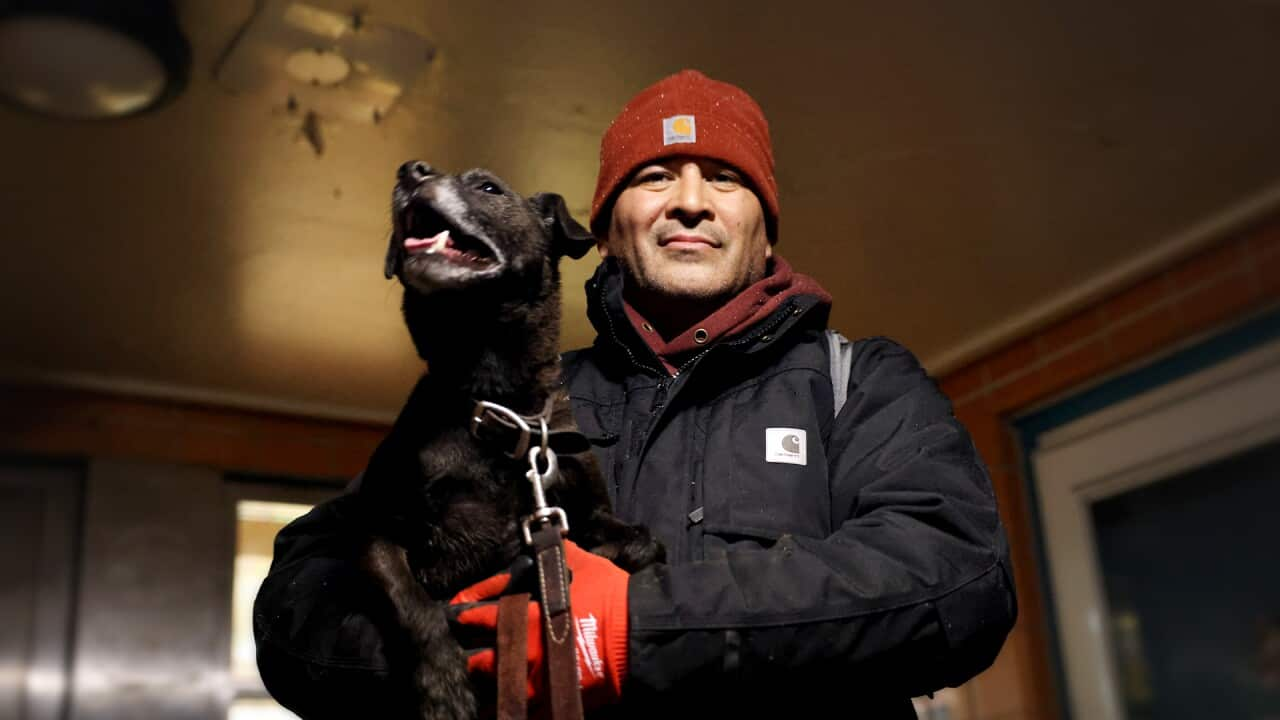Key Points
- Masses of rats started arriving at the usually picturesque fishing community of Karumba in Queensland this week.
- The "moving mass" of rodents, which has reportedly reached plague proportions, is heading north and wreaking havoc.
- Dead rats have begun washing up on the beach and boat ramps, with at least 1,000 being removed each day.
Each day at least 1,000 dead rats are removed from boat ramps at a town in Queensland's far north.
The "big hairy fellas" started arriving at the usually picturesque fishing community of Karumba this week.
The native long-haired rats have been steadily marching towards the coast after an extended wet season in inland Australia, spreading hundreds of kilometres in their hunt for new crops to nibble on.
Cleaning up the dead rats, with the accompanying stench, is bad enough, but the live ones are causing plenty of trouble too.
"You just try and keep everything locked up but whatever might give them cover and protection you open it up," Carpentaria Shire mayor Jack Bawden said.
"You keep the bonnet of your car up otherwise they will get in there and chew your wires."
It's even worse for boat owners.
"They are probably in a lot more trouble. Boats are a very expensive bit of gear with all the electronics," Bawden said.
"People try to be smart and anchor them in the river but rats just go up the anchor chain and make themselves at home - you can't win."
'The road looked like it was moving'
It's hard to imagine the rat plague getting any worse, but Bawden is bracing himself.
"We are only just starting to cop it," he told the Australian Associated Pres.
A "moving mass" of rats is heading north, he says, using the river systems to navigate their way to the Gulf Country town.
For months Bawden has heard stories of rodents wreaking havoc in communities such as Winton, Richmond and Julia Creek.
"Someone told me the other day that between Winton and Cloncurry the road looked like it was moving there was so many of them," he said.
"They will all be coming this way unfortunately."
The rodents have also reached the town of Normanton.
"Mate, there's rats everywhere," said resident Derek Lord, who runs a vehicle hire business.
"They're that bold they're coming out during the day," he told AFP.
"We have hire vehicles and they literally destroyed a car overnight, taking all of the wiring out of the engine bay."
Lord said his pet ducks had been "going mad" as rats broke into their cages and stole their eggs.
"They're just like, bold as hell," he said.
What caused the rat plague in Queensland?
This year's wet season is believed to have helped boost the native long-haired rat population in the state's northwest, ensuring abundant vegetation where rodents can hide and eat.
Boom-and-bust weather cycles dominate much of inland Australia, where heavy rains can fuel rapid crop growth after years of crippling drought.
These patterns are often accompanied by booming populations of pests such as locusts, rats, and mice.

An extended wet season is believed to have fuelled a rat plague in north Queensland. Source: Facebook / This Is Livin
How does a rat plague end?
There is a glimmer of hope that the problem may take care of itself.
"They are starting to cannibalise themselves. Whether that thins them remains to be seen," Bawden said.
Mother Nature may have the solution.
"Someone asked me what I was doing about the rats and I said 'praying for rain'," Bawden said.
"I was talking to a long-term old fella here the other day and he's seen a rat plague here twice.
"He said it's the same each time - they just keep on coming until they are washed away.
"There's nothing you can do. Unless it rains or floods, it is long term ... nature caused it and nature will clean it up."
-Additional reporting by AFP.




